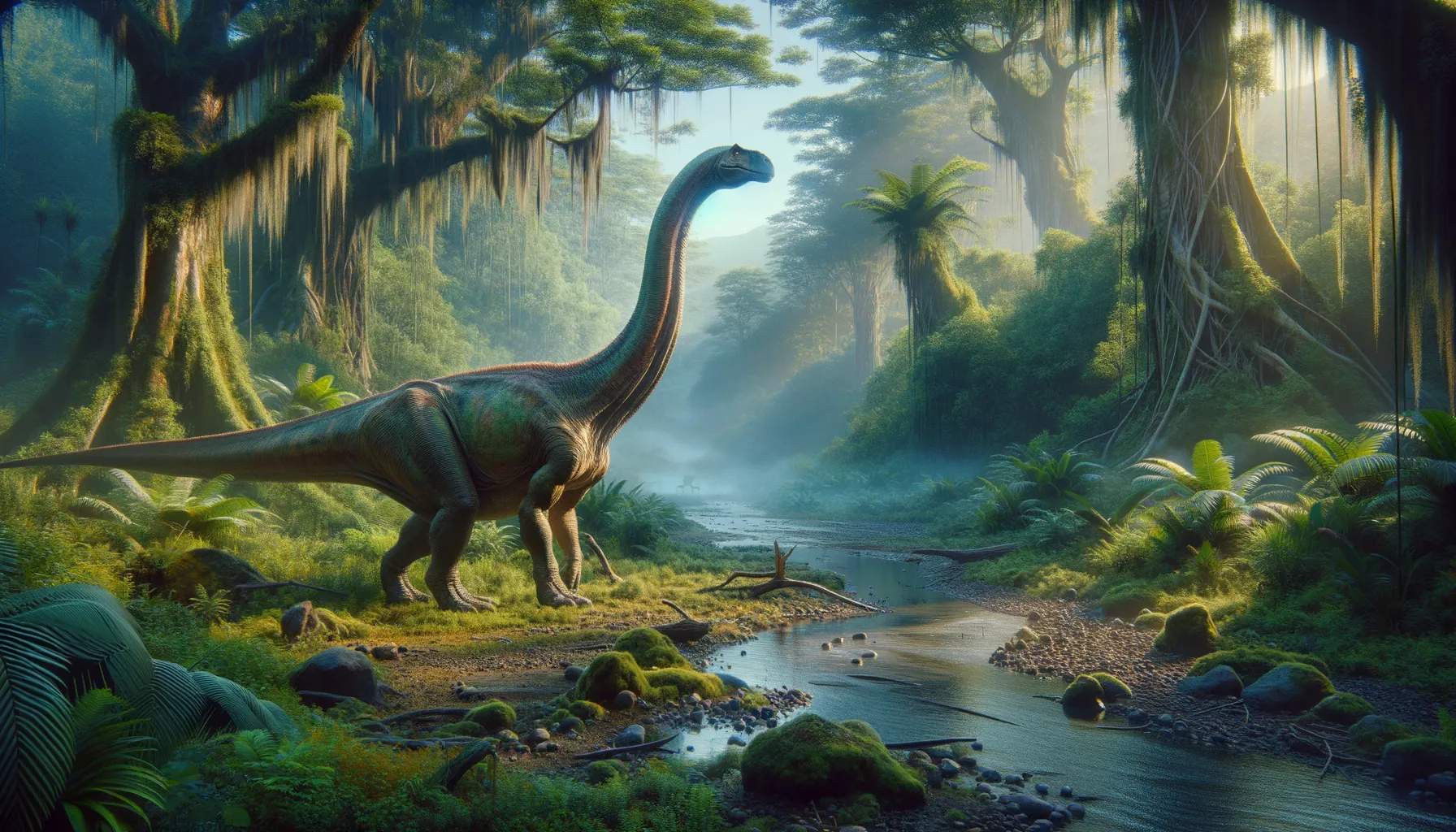
Chuxiongosaurus
Graceful giant from the Jurassic era.
Period
Jurassic
Length
Could reach lengths up to 15 meters.
Height
Around 4 meters tall at the shoulder.
Weight
Weighed approximately 8 to 10 tons.
Chuxiongosaurus was a long-necked dinosaur that lived during the Jurassic period. Primarily known for its large body and slow movement, its fossil remains have provided valuable insights. Discovered in China, Chuxiongosaurus adds to the understanding of the diverse ecosystems that existed millions of years ago. Its herbivorous diet and specific physical adaptations helped it survive in the lush environments of its time.
Diet
Chuxiongosaurus was a herbivore, feeding primarily on a variety of plants, leaves, and possibly fruits. Its long neck allowed it to reach high vegetation, which provided a plentiful food source.
Hunting
Being a herbivore, Chuxiongosaurus did not hunt other animals. Instead, it likely moved in herds to forage for plants and vegetation, which would have been abundant in its environment.
Environmental challenges
Chuxiongosaurus faced challenges such as predation from large carnivorous dinosaurs. Competition for resources with other herbivores in the area was another significant challenge. Climatic changes and natural disasters could also alter its habitat and food availability. Adaptations such as herd behavior and its physical size might have helped it contend with these challenges.
Speed
Relatively slow due to its massive size.
Lifespan
Estimated to be several decades long.
First discovery
Discovered in China in 2010.
Fun Facts
- Chuxiongosaurus was a dinosaur that lived during the early Jurassic period, about 190 million years ago.
- This dinosaur was discovered in China, specifically in the Yunnan Province, in a place known for many significant fossil finds.
- Chuxiongosaurus was a relatively small dinosaur, measuring around 4 meters in length, which is about the size of a small car.
- It is believed to belong to the sauropodomorphs, which is a group of plant-eating dinosaurs that eventually evolved into the gigantic long-necked sauropods.
- One interesting feature of Chuxiongosaurus is its elongated neck that helped it reach higher vegetation, a characteristic that became more pronounced in later sauropods.
- The name Chuxiongosaurus comes from 'Chuxiong,' the area where it was found, and 'saurus,' meaning lizard in Greek.
- Fossils of Chuxiongosaurus have helped paleontologists understand more about the early evolutionary stages of sauropodomorph dinosaurs.
Growth and Development
Chuxiongosaurus started life hatching from eggs, growing rapidly in its early years. Its growth rate may have slowed as it matured, reaching full size in about a decade. Like other large dinosaurs, it likely went through various developmental stages that required significant nutritional intake.
Habitat
Chuxiongosaurus inhabited dense forests and possibly open plains, where plant life flourished. It thrived in warm, humid environments with abundant vegetation. Its surroundings would have been diverse ecosystems, accommodating a range of other plant and animal life.
Interaction with other species
Chuxiongosaurus likely interacted with various dinosaur species, including both herbivores and carnivores. Its large size offered protection from many predators, though it might have coexisted alongside other giant herbivores. These interactions often centered around competition for food and territory.
Natural lifespan
Its natural lifespan was likely between 70 to 80 years.
Reproduction
Chuxiongosaurus reproduced by laying eggs, likely in nests constructed on the ground. Parental care might have included protecting the nest from predators and ensuring the young stayed safe in their vulnerable early days.
Social behaviour
It possibly lived in herds for protection and social interaction. These herds would have provided safety in numbers against predators. Social structures could have included young, adult, and mature individuals traveling and foraging together.
Fossil locations
Fossil remains of Chuxiongosaurus have been primarily found in China. These findings add vital data to the understanding of sauropod distribution. The excavation sites are important for unraveling the prehistoric history of the region.
